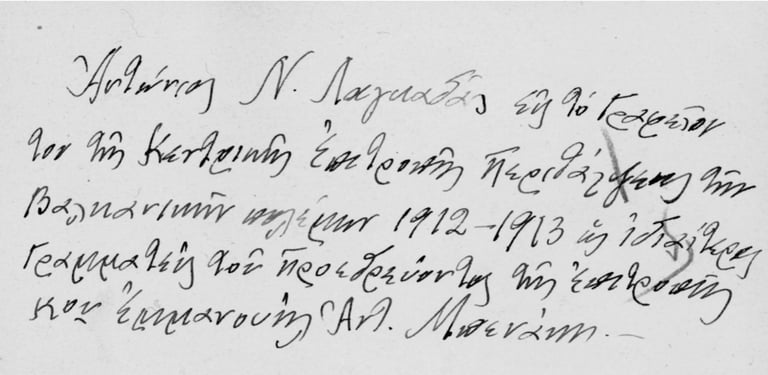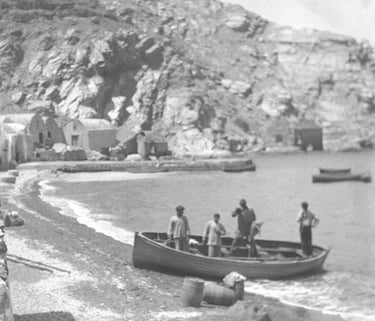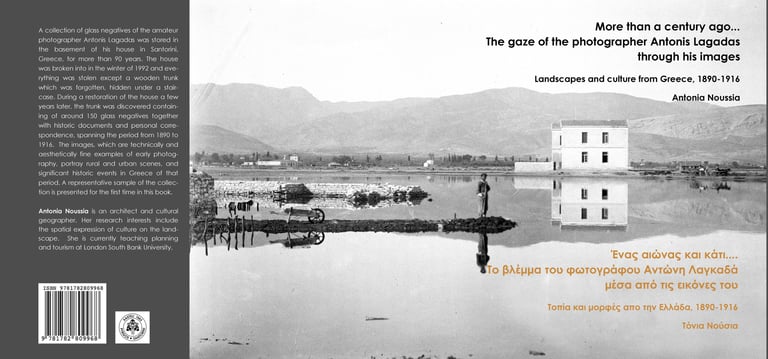The Archive
A collection of glass negatives, was hidden in the basement of Lagadas house in Kasteli of Pyrgos, for about 90 years. The house was broken into in the winter of 1992 and among the stolen contents were original photographic prints, which the photographer himself had organised in hand bound albums. During a restoration of the house, a few years later, a trunk was discovered, hidden under a staircase, consisting of around 150 silver bromide glass negatives, together with some prints on albumina paper, historic documents and personal correspondence. The dated series of negatives start in 1891 and end in 1916 when his photographic activities came to an end for an unknown reason. The images, which are technically and aesthetically fine examples of early photography, portray rural and urban scenes, and significant historic events in Greece of that period. The collection needed careful preservation work and cataloguing, as well as research to locate it in its social and historical context.
The inaugural exhibition in 2012 and the catalogue accompanying it, is the first stage of a project – many years in the making – that will make the photographic work of Antonis Lagadas known to the public, and will demonstrate its value not only for the comparative history of photography but also for the social and cultural history of Greece. The project was embarked on in 1999 in Exeter, with the instigation of Simon Whitehead and Liz Nicol. Simon invested time and effort to clean and scan a large part of the negatives and to create an archive. Students from the School of Graphic Arts at TEI Athens restored and scanned the albumina prints, under the guidance of their professor Philippa Athymaritou who also helped with the design the catalogue. Stan Lody at the London South Bank University has helped with cleaning and scanning many negatives. The exhibition in Santorini was co-organised with Estia Association in Pyrgos as a parallel event for the Santorini Biennale of Arts. The Chairman of Estia, Makis Zorzos, provided support and encouragement. Many friends and colleagues appreciated the collection and offered assistance and advice in different capacities. The caralogue and exhibition also owe much, as always, to the enthusiastic support of Hugo Hinsley.
The next stage of the project will be the compilation of a digital annotated archive of all the images, examined in the context of 19th and early 20th Century historiography, and contributing to the debate on the role of amateur practice in the history of photography and its relevance to the understanding of cultural and social history
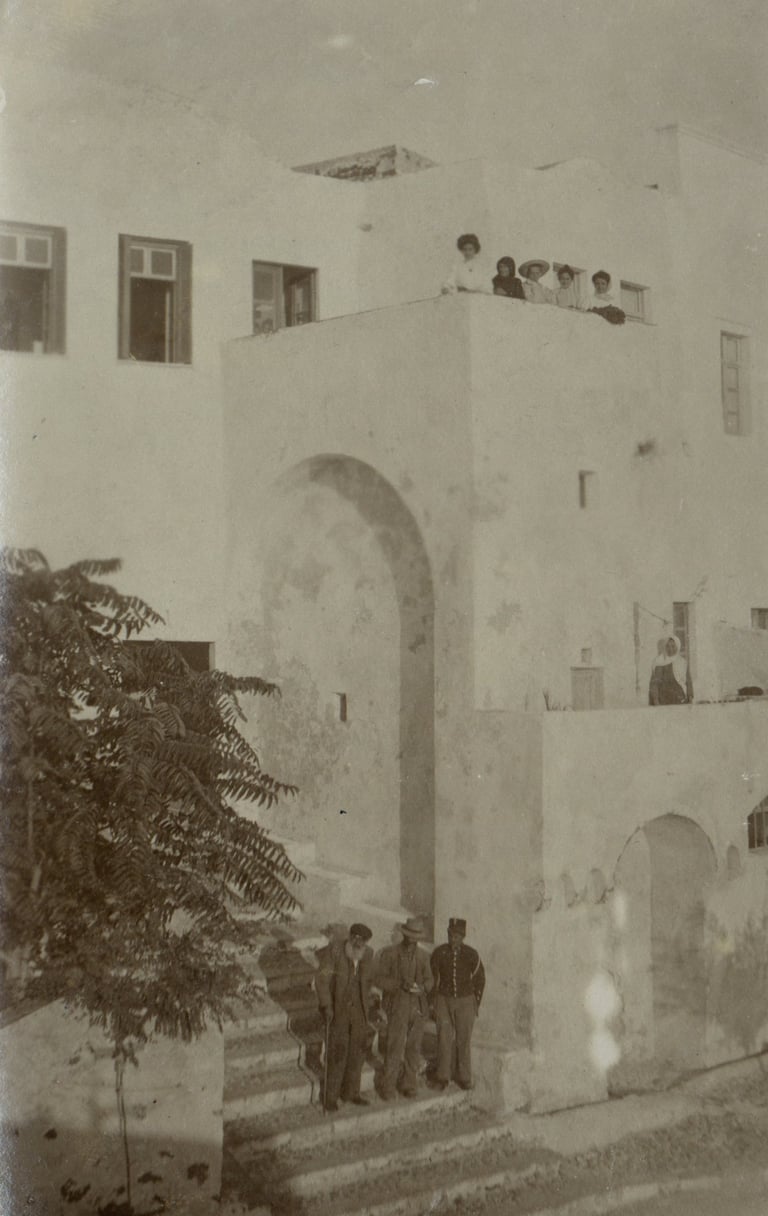


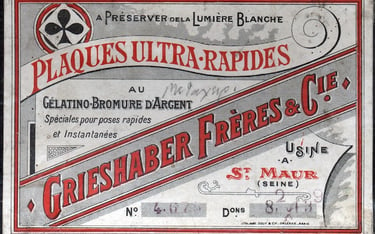
The Photographer
Antonis Langadas was born in Pyrgos Santorini in 1874, where he spent his childhood. After finishing school, he joined his brother to Athens to continue with his studies. Their father followed them leaving behind their mother and four sisters. The frequent correspondence between the family members became the main source of information for the exhibition.
He began to take a serious interest in photography in 1890 at the age of 16, with the support of Sophia Trikoupi (the well known sister of the Greek prime-minister Charilaos Trikoupis) who gave him his first camera. For the next 30 years he applied himself to photography as well as to the writing of articles and the editing of a literary journal.
In 1897, his inquisitive character brought him to Alexandria in Egypt to work in the "Choremis -Benakis" Company where he was gradually became a Director. In 1910, he returned to Athens to continue his involvement with the Benaki Company. Later he became Executive of the Municipality of Athens and Chairman of the Athens Cemetery.
The influences
Aware of the technical advancements and the aesthetic principles of photography in Europe, Langadas gave a different dimension to his pictures. Admirer of the British photographer, Peter Emerson, he was inspired by the ideas of naturalistic photography while he made reference to the artistic principles of pictoralist photographers, ideas with which he experimented during his travels in mainland Greece.
The years he spent in Egypt contributed to the strengthening of his relationship with photography. He met European and American photographers who travelled the Mediterranean in search of antiquities and picturesque landscapes. Egypt, Greece and Holy Land were the main destinations of those traveller-photographers who have played an important role to the development of photography as both a new technology and a form of art.
The styles from different influences are visible on his pictures after the 1903. That period, photographers in Greece depict reality with images of static views or emotionless portraits posing in studios with staged background. Lagadas combined both ways in the same picture, figures in their natural settings with expressions liberated from the anxiety of posing.
He was interested primarily in ‘picture making’ rather than using photography as a record of people and places. Adapting artistic principles of light and shade, he created meaning to his images while his experimental compositions went beyond the dominant ways.


